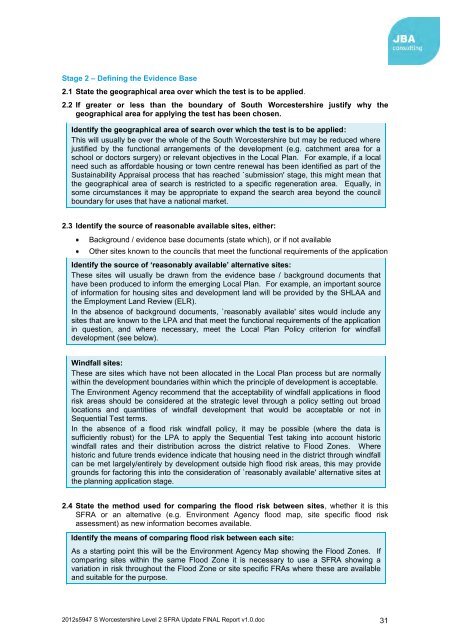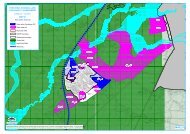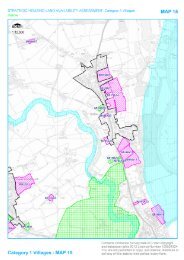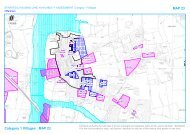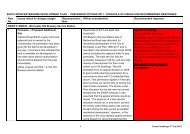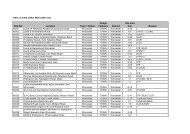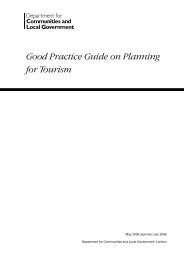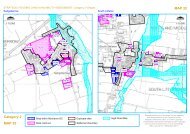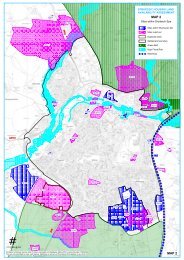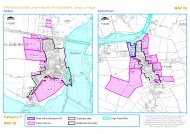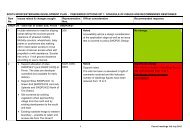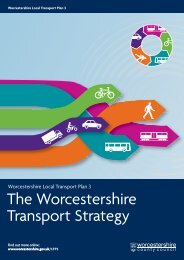Strategic Flood Risk Assessment - South Worcestershire ...
Strategic Flood Risk Assessment - South Worcestershire ...
Strategic Flood Risk Assessment - South Worcestershire ...
You also want an ePaper? Increase the reach of your titles
YUMPU automatically turns print PDFs into web optimized ePapers that Google loves.
Stage 2 – Defining the Evidence Base2.1 State the geographical area over which the test is to be applied.2.2 If greater or less than the boundary of <strong>South</strong> <strong>Worcestershire</strong> justify why thegeographical area for applying the test has been chosen.Identify the geographical area of search over which the test is to be applied:This will usually be over the whole of the <strong>South</strong> <strong>Worcestershire</strong> but may be reduced wherejustified by the functional arrangements of the development (e.g. catchment area for aschool or doctors surgery) or relevant objectives in the Local Plan. For example, if a localneed such as affordable housing or town centre renewal has been identified as part of theSustainability Appraisal process that has reached `submission' stage, this might mean thatthe geographical area of search is restricted to a specific regeneration area. Equally, insome circumstances it may be appropriate to expand the search area beyond the councilboundary for uses that have a national market.2.3 Identify the source of reasonable available sites, either:Background / evidence base documents (state which), or if not availableOther sites known to the councils that meet the functional requirements of the applicationIdentify the source of ‘reasonably available’ alternative sites:These sites will usually be drawn from the evidence base / background documents thathave been produced to inform the emerging Local Plan. For example, an important sourceof information for housing sites and development land will be provided by the SHLAA andthe Employment Land Review (ELR).In the absence of background documents, `reasonably available' sites would include anysites that are known to the LPA and that meet the functional requirements of the applicationin question, and where necessary, meet the Local Plan Policy criterion for windfalldevelopment (see below).Windfall sites:These are sites which have not been allocated in the Local Plan process but are normallywithin the development boundaries within which the principle of development is acceptable.The Environment Agency recommend that the acceptability of windfall applications in floodrisk areas should be considered at the strategic level through a policy setting out broadlocations and quantities of windfall development that would be acceptable or not inSequential Test terms.In the absence of a flood risk windfall policy, it may be possible (where the data issufficiently robust) for the LPA to apply the Sequential Test taking into account historicwindfall rates and their distribution across the district relative to <strong>Flood</strong> Zones. Wherehistoric and future trends evidence indicate that housing need in the district through windfallcan be met largely/entirely by development outside high flood risk areas, this may providegrounds for factoring this into the consideration of `reasonably available' alternative sites atthe planning application stage.2.4 State the method used for comparing the flood risk between sites, whether it is thisSFRA or an alternative (e.g. Environment Agency flood map, site specific flood riskassessment) as new information becomes available.Identify the means of comparing flood risk between each site:As a starting point this will be the Environment Agency Map showing the <strong>Flood</strong> Zones. Ifcomparing sites within the same <strong>Flood</strong> Zone it is necessary to use a SFRA showing avariation in risk throughout the <strong>Flood</strong> Zone or site specific FRAs where these are availableand suitable for the purpose.2012s5947 S <strong>Worcestershire</strong> Level 2 SFRA Update FINAL Report v1.0.doc 31


